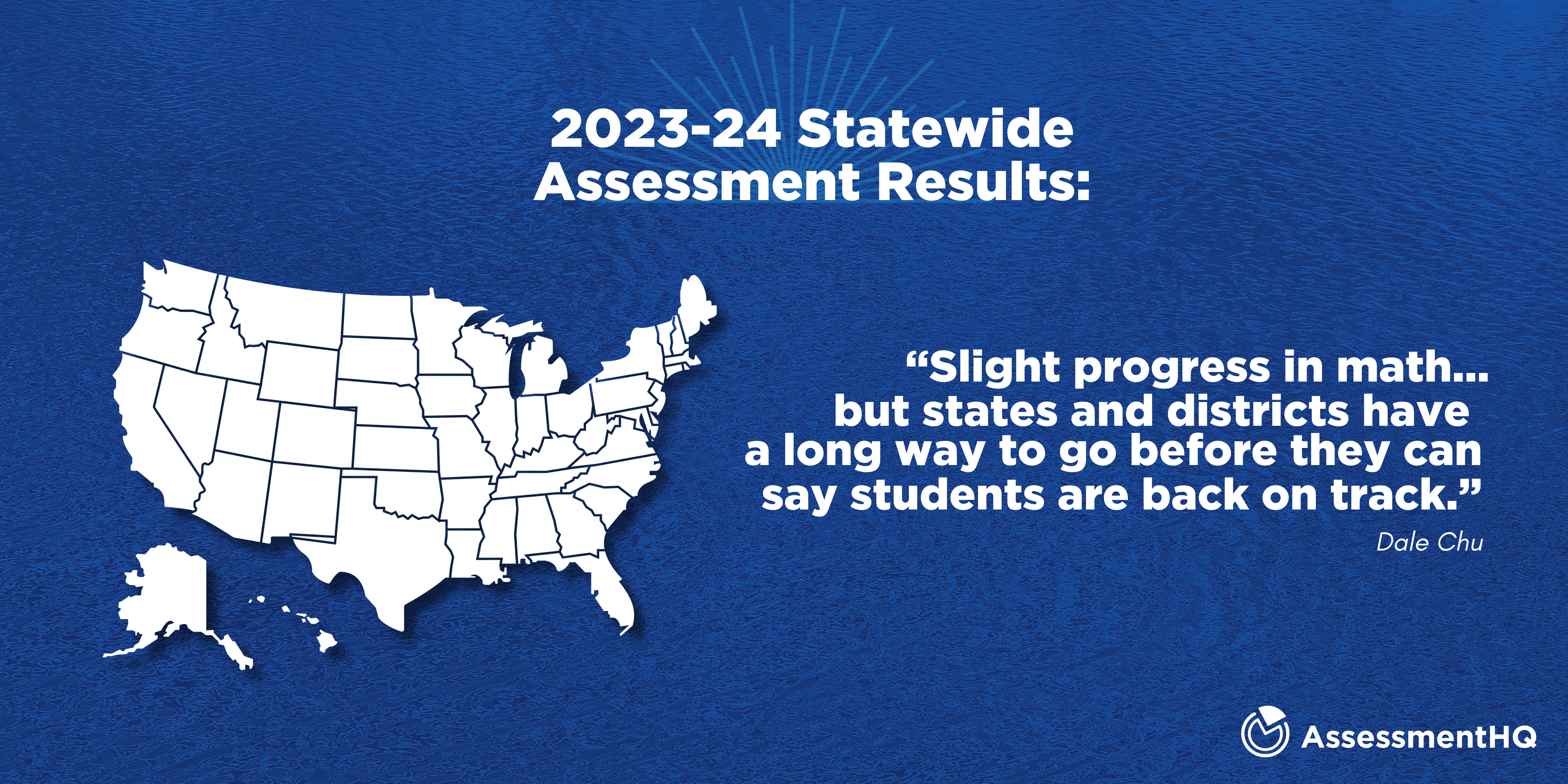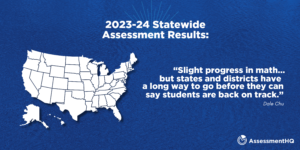
05 Dec 2024 assessment results: Slight progress in math
By Dale Chu
 Now that most states have released their 2024 assessment results, what can we make of them? Overall, most states are nowhere near full recovery. Anecdotally, in conversations I’ve had with school and district leaders, more movement is being seen in math than ELA—with the conventional wisdom being that math skills are more dependent on in-person schooling, which many kids didn’t have during the thick of the pandemic.
Now that most states have released their 2024 assessment results, what can we make of them? Overall, most states are nowhere near full recovery. Anecdotally, in conversations I’ve had with school and district leaders, more movement is being seen in math than ELA—with the conventional wisdom being that math skills are more dependent on in-person schooling, which many kids didn’t have during the thick of the pandemic.
The numbers seem to bear this out. Between 2023 and 2024, North Carolina, for example, saw math proficiency rates rise from 53% to 55% (short of the pre-pandemic rate of 59% in 2019). The state’s ELA scores were flat. Tennessee saw ELA scores rise by one percentage point while math proficiency rose by two points. Here in my home state of Colorado, math proficiency rates rose by one percentage point while ELA didn’t budge. To be sure, there are exceptions: Florida saw proficiency rates rise by three percentage points in both math and ELA while Indiana didn’t see growth in either subject.
The results get noisier when you drill down to percentages by grade level, race, and economic status, but my sense is that what we’re seeing between 2023 and 2024 will largely hew with what researchers observed between 2022 and 2023: slight progress in math and hardly any in ELA. This may be particularly true for elementary students. To wit, next year’s third graders weren’t even in Kindergarten when the pandemic started. However, even as there’s been a higher uptick in math, students still generally lag further behind in math than in reading.
At the same time, there’s reason to worry that the math skills of older students are moving at a particularly glacial pace—a problem that may loom large as states like New York continue to retreat from end of course exams. Assessing high school performance has always been tricky as federal law focuses state testing on grades 3-8. Bucking the trend, Utah is considering expanding its testing regime to ninth and tenth graders—in part due to the woeful performance of students post-pandemic.
Finally, the dismaying news coming from New York City underscores the need to keep pressing on secondary math: Math proficiency rates for high schoolers in the Big Apple just dropped a whopping 9 points from 56.2% to 46.8%. There’s a lot that can be said about what’s happening there and elsewhere, but the upshot is that states and districts have a long way to go before they can say students are back on track.


Sorry, the comment form is closed at this time.